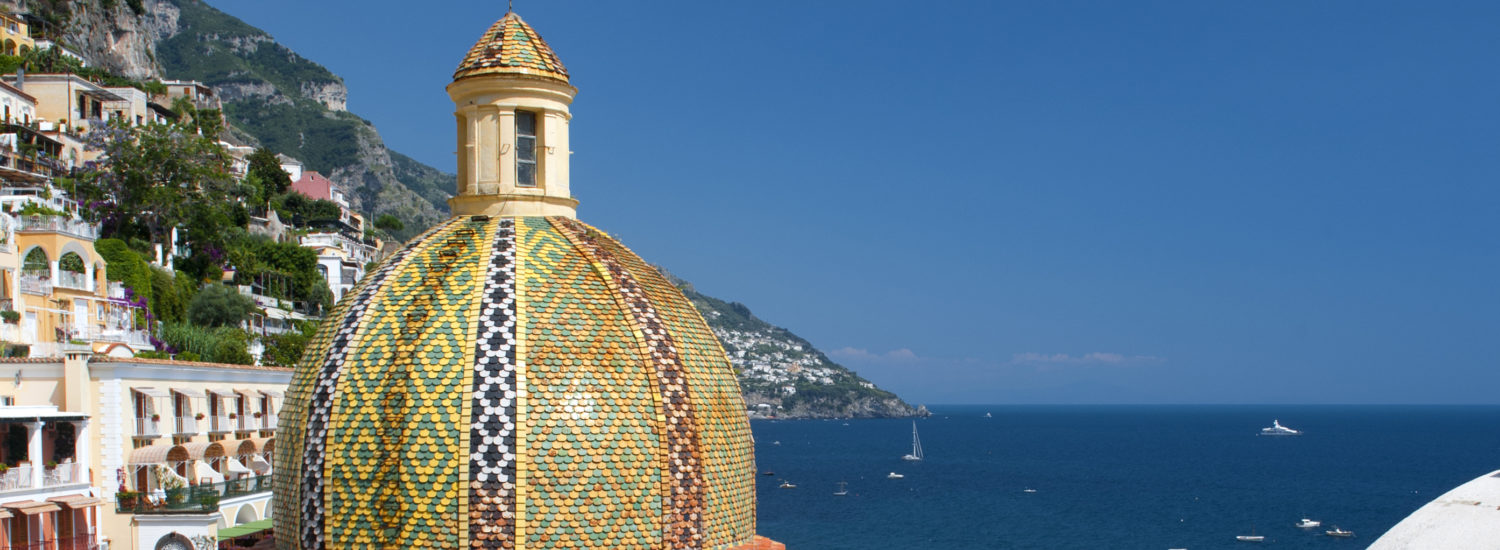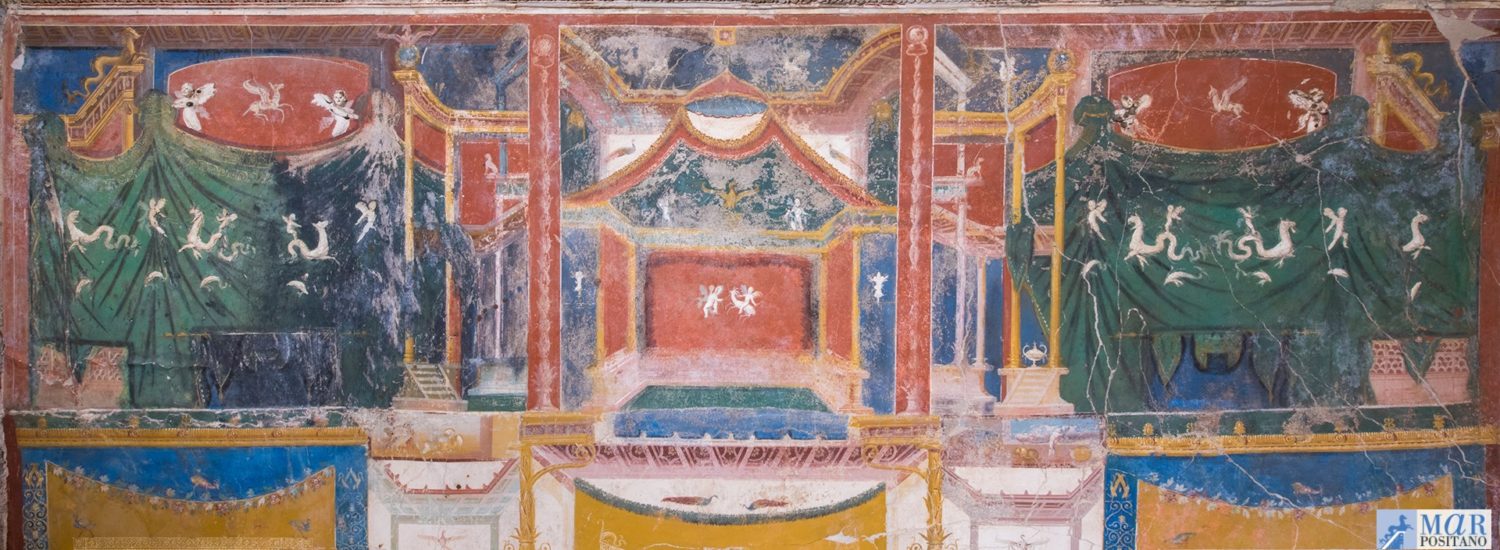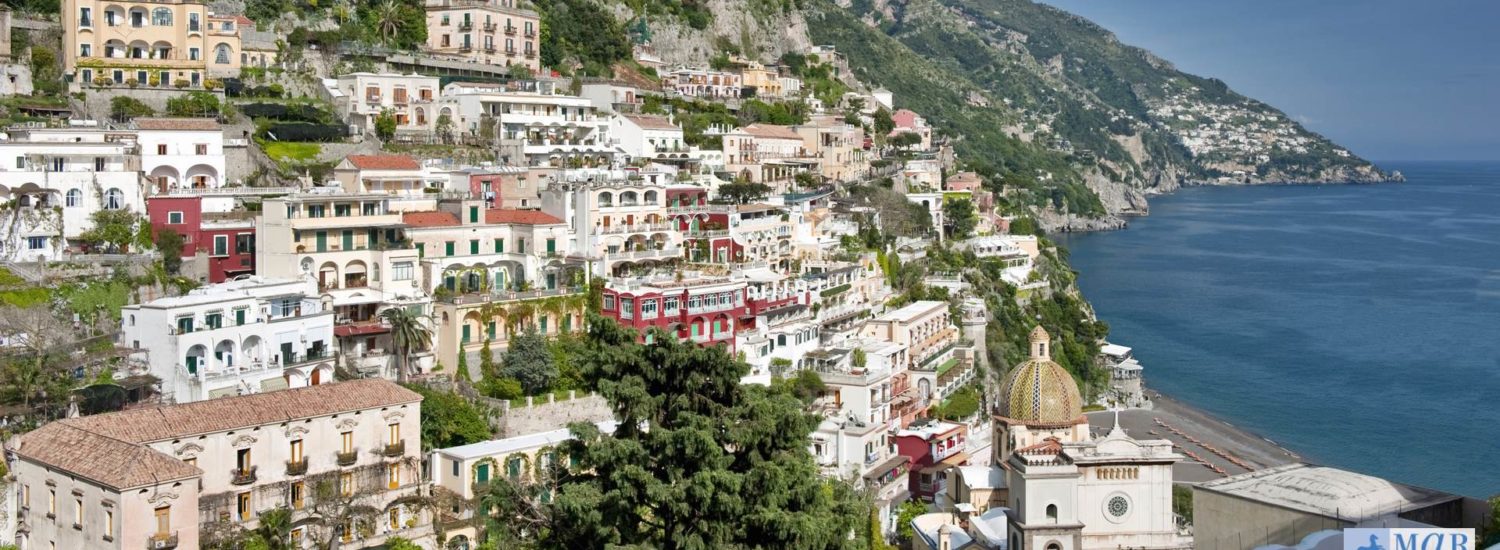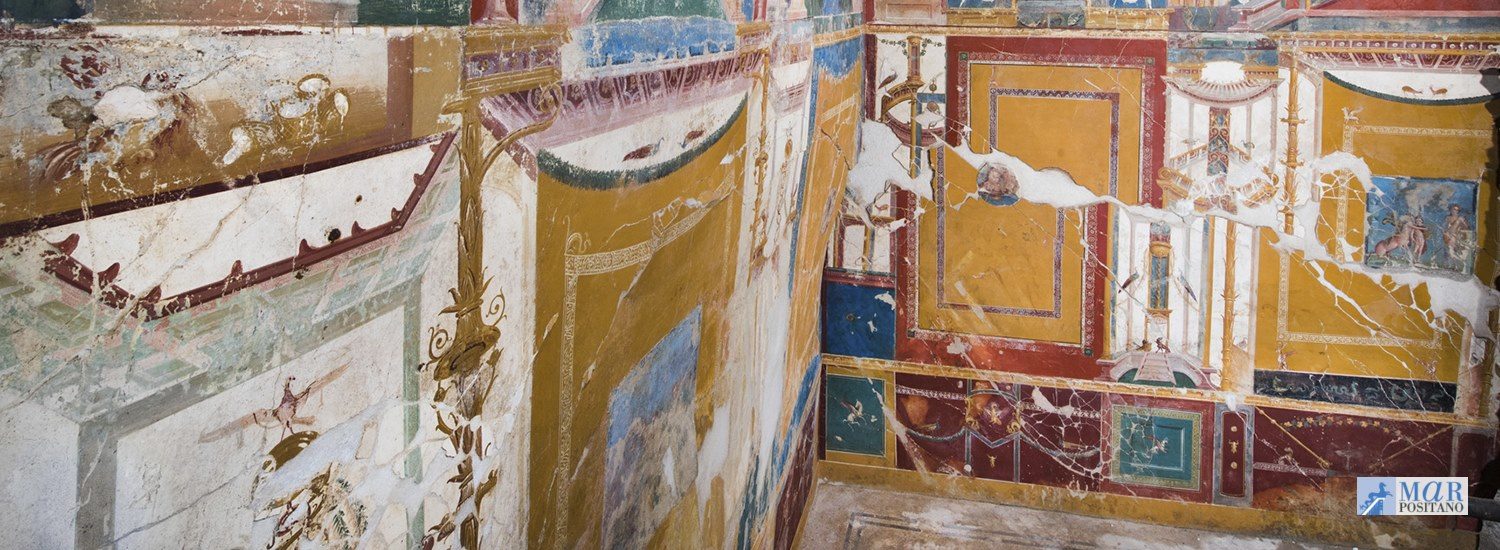On 1st June 2021 the MAR-Roman Archaeological Museum of Positano reopens to the public at the usual entrance times.
Starting from next Tuesday it will again be possible, respecting the safety protocols dictated by the Technical Scientific Committee for the Covid-19 emergency, to visit the splendid triclinium with the cycle of Roman frescoes in the fourth Pompeian style of the 1st century AD, the upper crypt and the precious archaeological finds of the Roman age recovered during the investigations with some new exhibits.
“The beauty of our cultural heritage returns to everyone’s disposal with the reopening of the MAR – says Giuseppe Guida, Mayor of Positano – even if the research activity, despite the health emergency, has never actually stopped. In recent months, a complex archaeological investigation carried out near the triclinium
of the maritime villa has brought to light an extraordinary construction schedule with the identification of architectural structures that preceded those destroyed in 79 AD.
With the reopening of the museum, thanks to the recent excavation activities but also to the restoration of some wall finds recovered from the investigations of via Rampa Teglia, in synergy with the SABAP of Salerno and Avellino – thanks to the availability of the Superintendent Francesca Casule and the archaeologist officer Silvia Pacifico -, the museum structure will be able to offer a renewed exhibition itinerary aimed at enhancing the extraordinary archaeological, historical, cultural and environmental potential that characterizes our municipality “.
POSITANO HAS DISCOVERED A NEW CHARM
The charm of history, on which the whole contemporary world has been walking since the 60s of the last century. Right in the center of our city, the Roman Villa stands today as a testimony of past wonders and as they fly for a new image of Positano, which is affirmed, above all, as a melting pot of art and culture.The tenacity and stubbornness of the Superintendence for the Archaeological Heritage of Salerno, precursor in the discovery and enhancement of the Domus of Positano, have allowed this treasure to come to light, giving concrete proof of the importance of our city over the centuries, crossroads of peoples , civilizations and cultures.
To them the merit of having placed this extraordinary charm not only as a bulwark for the recovery of the historical-artistic importance assumed by Positano over the centuries, but also as an exceptional possibility of anthropological and cultural study.
The sensitivity of our Regional Administrators has also allowed the redevelopment of this historical and artistic heritage, which will allow Positano to impose itself on the world tourism scene not only as a place of extraordinary natural beauty, but also as a fundamental step for the knowledge of the wonderful vestiges of our past.The Roman Villa is a tangible proof that Positano has always been a privileged place of otium, a refreshment not only for the body, but above all for the mind.
It is synonymous of the grandeur of Positano. That greatness that has always been understood as a simple natural beauty, but that nowadays has a profound and inestimable cultural importance.
The Mayor of Positano.
Michele De Lucia
HEAD OF THE ARCHEOLOGY AND FINE ARTS OFFICE
I can still feel the full emotion of the very first visit to the site of the villa, at the time when you still needed a ladder to climb down to get there and at that time the last restoration interventions were still under way on the painted walls that were in extraordinary preservation conditions.Today the state of the art and emotional setting up of the site is ready, the decorated environments can be reached by a convenient transparent staircase that allows one to imagine how the former site situation was, and along the visiting course you can admire the Medieval crypts and the showcases with the objects that have come to light.
Many elements – like the wall sliding evident by a fresco, the mud cast of the torn out wooden door, the fused and compressed metal artifacts – contribute to relive the destructive violence of the event, I am sure that together they will make it an
unforgettable experience for the visitors.
Multimedia educational means will furthermore allow to better appreciate the details of the wall paintings, they represent an extraordinary richness of themes and an unusual arrangement of the surfaces and materials, including cornices and decorative elements placed on top in stucco.
Now that the venue areas are ready, it is necessary to co-work with the ecclesiastic authorities and the Municipality of Positano, that has done so much for its restoration, to guarantee the management that cannot disregard a careful and regular monitoring of this site, to preserve it throughout time – protecting its material consistency – its exceptional enchantment.
Head of the Archaeological and Monument and Fine Arts Office of Salerno and Avellino.
Francesca Casule




